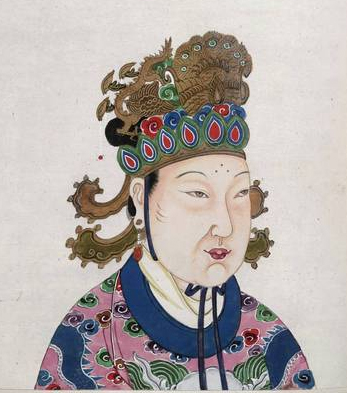75 Chinese Civilization
Tang Dynasty
After the fall of the Han Dynasty (202 BCE-220 CE), the country went through a period of changing rule in which the Wei, Jin, and Wu Hu dynasties governed in succession. The Wu Hu was replaced by the Sui Dynasty (589-618 CE), which began well and made many advances but, like so many dynasties in China’s history, ended badly with a tyrant on the throne who cared more about himself and his luxury than the good of the people.
The Sui Dynasty was responsible for streamlining bureaucracy and a growing interest in the arts. One of the best-known versions of the legend of Mulan, the girl who takes her father’s place in the army and becomes a war hero, dates from this period. However, the more comfortable and powerful the Sui became in their reign, the more power and luxury they wanted.
The last two kings, Wen and Yang, put all their efforts into military expansion in the Korean peninsula and building huge monuments to honor their names. Yang inherited a bankrupt government from his father but continued his policies and drove the country further and further into debt. He was finally assassinated by his chancellor, Yuwen Huaji, and a popular general of the army, Li-Yuan the Duke of Tang, rose in rebellion and took control. Li-Yuan then became Emperor Gaozu (r. 618-626 CE) and founded the Tang Dynasty (618-907 CE).[1]
Empress Wu Zetian
- Empress Wu Zetian (r. 690-704 CE) was the only female emperor of Imperial China. She reigned during the Tang Dynasty and was one of the most effective and controversial monarchs in China’s history. She began her life at court as a concubine of the emperor Taizong.
-

Portrait of Empress Wu in Public domain, via Wikimedia Commons - To ensure the security of her new reign she had any members of the Tang Dynasty royal family imprisoned (including the future emperor Xuanzong) and proclaimed herself an incarnation of the Maitreya Buddha, calling herself Empress Shengsen which means ‘Holy Spirit’.
- As early as 660 CE, Wu had organized a secret police force and spies in the court and throughout the country. Empress Wu used the intelligence she gathered to pressure some high-ranking officials who were not performing well to resign; others she simply banished or had executed. She reformed the structure of the government and got rid of anyone she felt was not carrying out their duties and so reduced government spending and increased efficiency. In their place, she appointed intellectuals and talented bureaucrats without regard to family status or connections.
- She improved the public education system by hiring dedicated teachers and reorganizing the bureaucracy and teaching methods. She also reformed the department of agriculture and the system of taxation by rewarding officials who produced the greatest amount of crops and taxed their people the least. She ordered farming manuals to be written and distributed. She organized teams to survey the land and build irrigation ditches to help grow crops and redistributed the land so that everyone had an equal share to farm. Agricultural production under Wu’s reign increased to an all-time high.
- Wu also reformed the military by mandating military exams for commanders to show competency, which were patterned on her imperial exams given to civil service workers. The military exams were intended to measure intelligence and decision making and candidates were personally interviewed instead of just being appointed because of family connections or their family’s name.[2]
-
Song Dynasty
The chaos and political void caused by the collapse of the Tang Dynasty (618-907 CE) led to the break-up of China into five dynasties and ten kingdoms, but one warlord would, as had happened so often before, rise to the challenge and collect at least some of the various states back into a resemblance of a unified China. The Song dynasty was, thus, founded by the Later Zhou general Zhao Kuangyin (927-976 CE) who was endorsed as emperor by the army in 960 CE.
Although the Song were able to govern over a united China after a significant period of division, their reign was beset by the problems of a new political and intellectual climate which questioned imperial authority and sought to explain where it had gone wrong in the final years of the Tang dynasty. A symptom of this new thinking was the revival of the ideals of Confucianism, Neo-Confucianism as it came to be called, which emphasized the improvement of the self within a more rational metaphysical framework. This new approach to Confucianism, with its metaphysical add-on, now allowed for a reversal of the prominence the Tang had given to Buddhism, seen by many intellectuals as a non-Chinese religion.[3]
- “Tang Dynasty” by Emily Mark is licensed under CC BY-NC-SA 4.0 ↵
- “Wu Zetian” by Emily Mark is licensed under CC BY-NC-SA 4.0 ↵
- “Tang Dynasty” by Emily Mark is licensed under CC BY-NC-SA 4.0 ↵

